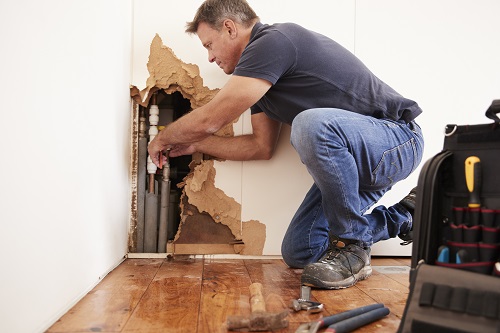How Much Does Water Damage Restoration Cost and Is It Worth It?
How Much Does Water Damage Restoration Cost and Is It Worth It?
Water damage can be a nightmare for homeowners and businesses alike. Whether it’s due to a burst pipe, a leaking roof, or a natural disaster, the aftermath of water damage can be devastating. Not only does it ruin belongings and property, but it also poses serious health risks and can lead to the growth of mold and mildew. In such situations, water damage restoration becomes crucial to restore the affected areas and prevent further damage. However, one common concern that arises is the cost associated with Bryter Water Damage Restoration. In this article, we will explore the average costs of water damage restoration and discuss whether it is worth the investment.
The cost of water damage restoration can vary significantly depending on several factors, including the extent of the damage, the size of the affected area, the type of water involved, and the location. On average, homeowners can expect to pay anywhere between $2,000 and $10,000 for water damage restoration. However, it’s important to note that these figures are estimates, and the actual cost can be higher or lower based on the specific circumstances.
One of the primary factors that influence the cost is the extent of the damage. Minor incidents, such as small leaks or localized flooding, may require minimal restoration efforts and cost less to repair. On the other hand, severe water damage that affects multiple rooms or entire floors of a building will require extensive restoration work, including drying, dehumidification, structural repairs, and mold remediation. The more extensive the damage, the higher the cost will be.
The type of water involved in the damage also plays a significant role in determining the cost. Water damage is classified into three categories: clean water, gray water, and black water. Clean water, such as that from a burst pipe or a leaking faucet, is relatively easier and less expensive to clean up. Gray water, which may contain contaminants from appliances or wastewater, requires more thorough cleaning and decontamination. Black water, which includes sewage or floodwater, is the most hazardous and costly to handle due to the high risk of bacteria and pathogens.
Location is another important factor influencing the cost of water damage restoration. The cost of living and labor rates can vary significantly depending on the region and city. For example, restoration services in metropolitan areas may be more expensive compared to rural areas. Additionally, if the water damage occurs in a high-rise building or a multi-story property, the restoration process becomes more complex and time-consuming, leading to higher costs.
Now, let’s address the question of whether water damage restoration is worth the cost. At first glance, the price tag may seem steep, but when considering the potential consequences of leaving water damage untreated, restoration proves to be a worthwhile investment. Failing to address water damage promptly can lead to structural issues, compromised electrical systems, and the growth of mold and mildew, which can pose serious health risks to occupants.
Water damage restoration not only aims to repair the visible damage but also focuses on preventing long-term problems. Professional restoration companies have the expertise, equipment, and knowledge to properly assess the damage, dry the affected areas, remove excess moisture, and restore the property to its pre-damaged state. By addressing the issue promptly and thoroughly, they can minimize the risk of further damage and ensure a safe and healthy environment.
Moreover, engaging professional restoration services can save time and effort. Water damage restoration involves specialized equipment like industrial-grade dehumidifiers, air movers, and moisture meters, which are not readily available to most homeowners. Restoration experts are trained to handle the complexities of water damage, allowing them to work efficiently and effectively. This means that the restoration process can be completed in a shorter time frame, minimizing disruption to your daily life or business operations.
Additionally, many insurance policies cover water damage restoration, depending on the cause and circumstances of the damage. It is crucial to review your insurance policy and consult with your insurance provider to determine the coverage you have. If you are covered, the financial burden of restoration can be significantly reduced or even eliminated, making it a more viable option.
In conclusion, water damage restoration costs can vary depending on the extent of the damage, the type of water involved, and the location. While the price may seem high, the investment in professional restoration services is well worth it considering the potential consequences of untreated water damage. Prompt and thorough restoration can mitigate further damage, ensure the safety of occupants, and provide peace of mind. Additionally, insurance coverage can help alleviate the financial burden. When faced with water damage, it is crucial to act swiftly and seek professional assistance to restore your property to its pre-damaged condition.
